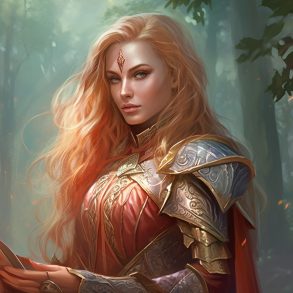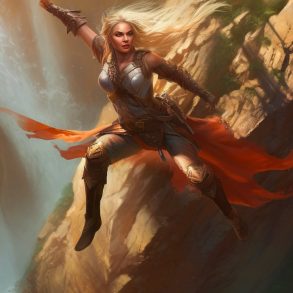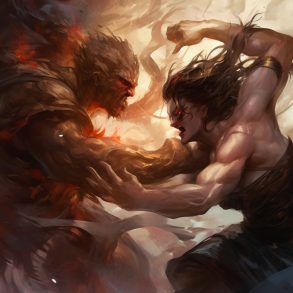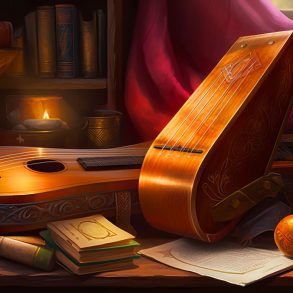In Multiclassing 5E is a tricky yet potentially fulfilling tool to utilize. Multiclassing involves placing leveling bonuses in classes that are not your chosen core class. For the majority of players and campaigns, sticking to a single class is more than enough for your characters. However, multiclassing can lead to some really interesting character builds.
Why should you multiclass?
Multiclassing is a very complex topic and can quickly get very overwhelming to plan out. It can seem quite daunting at first but once you understand how it works, you’ll have the opportunity to build characters in some very unique and powerful ways.
There are many advantages to multiclassing, such as gaining armor proficiencies and additional low-level class skills, and developing a specific character archetype. One of the biggest reasons not to multiclass is because campaigns are normally capped at level 20, so placing levels in additional classes could prevent your character from getting some of the powerful level 17-20 abilities.
It’s important to note that when you’re leveling, your total character level will stay the same even if you do multiclass. An example would be that if you put 3 levels in Rogue but 2 in Cleric, you would still be character level 5.
When deciding whether to multiclass, keep in mind that you will need minimum ability scores for certain classes. You can’t take a level in an additional class unless you meet these requirements. I’ve listed a quick summary of the base classes from the Player’s Handbook below:
Multiclassing 5E prerequisites
| Class | Minimum Ability Score |
|---|---|
| Barbarian | 13 Strength |
| Bard | 13 Charisma |
| Cleric | 13 Wisdom |
| Druid | 13 Wisdom |
| Fighter | 13 Strength or Dexterity |
| Monk | 13 Dexterity and Wisdom |
| Paladin | 13 Strength and Charisma |
| Ranger | 13 Dexterity and Wisdom |
| Rogue | 13 Dexterity |
| Sorcerer | 13 Charisma |
| Warlock | 13 Charisma |
| Wizard | 13 Intelligence |
Multiclassing 5E proficiency bonus
By adding a level to an additional class, you’ll receive the extra proficiency bonuses from that class. The following is a quick list of the base proficiency bonuses:
- Barbarian – Shields, Simple Weapons, Martial Weapons
- Bard – Light Armor, 1 Skill of Choice, 1 Musical Instrument of Choice
- Cleric – Light Armor, Medium Armor, Shields
- Druid – Light Armor, Medium Armor, Shields (Druids won’t wear metal armor or use metal shields)
- Fighter – Light Armor, Medium Armor, Shields, Simple Weapons, Martial Weapons
- Monk – Simple Weapons, Shortswords
- Paladin – Light Armor, Medium Armor, Shields, Simple Weapons, Martial Weapons
- Ranger – Light Armor, Medium Armor, Shields, Simple Weapons, Martial Weapons, 1 Skill of Choice
- Rogue – Light Armor, 1 Skill of Choice, Thieves’ Tools
- Sorcerer – None
- Warlock – Light Armor, Simple Weapons
- Wizard – None
Best multiclassing 5E options
There are 12 main classes to choose from when creating your character. This opens up the chance for some very interesting combinations if you do decide to multiclass. However, not all class combinations are synergistic and you will need to pay close attention to which classes offer beneficial low-level skills that you can best utilize.
Conversely, maybe a conflicting multiclass is exactly what you want for roleplaying purposes! This can help you avoid getting locked into min-maxing. If you are ever unsure of which combo to pursue, you can always check with your DM to help advise the best options for your campaign.
I’ve created a simple table for easy reference to help you pick a cohesive combination. Keep in mind that several of these options are only beneficial if you choose specific skills and abilities for an additional class. It may be beneficial to search for a more detailed guide to building the character class that interests you the most:
✕ = Minimal/No Benefits
✓ = Recommended Options
| Barbarian | Bard | Cleric | Druid | Fighter | Monk | Paladin | Ranger | Rouge | Sorcerer | Warlock | Wizard | |
|---|---|---|---|---|---|---|---|---|---|---|---|---|
| Barbarian | – | ✓ | ✓ | ✓ | ✓ | ✕ | ✕ | ✕ | ✓ | ✕ | ✕ | ✕ |
| Bard | ✕ | – | ✓ | ✕ | ✓ | ✕ | ✓ | ✕ | ✓ | ✕ | ✕ | ✕ |
| Cleric | ✕ | ✕ | – | ✕ | ✕ | ✕ | ✓ | ✕ | ✕ | ✕ | ✕ | ✕ |
| Druid | ✓ | ✕ | ✓ | – | ✓ | ✓ | ✕ | ✓ | ✕ | ✕ | ✕ | ✕ |
| Fighter | ✓ | ✕ | ✕ | ✕ | – | ✕ | ✕ | ✓ | ✓ | ✕ | ✓ | ✕ |
| Monk | ✕ | ✕ | ✓ | ✕ | ✕ | – | ✕ | ✓ | ✓ | ✕ | ✕ | ✕ |
| Paladin | ✕ | ✓ | ✕ | ✕ | ✕ | ✕ | – | ✕ | ✕ | ✓ | ✓ | ✕ |
| Ranger | ✕ | ✕ | ✓ | ✕ | ✓ | ✕ | ✓ | – | ✓ | ✕ | ✓ | ✕ |
| Rouge | ✕ | ✓ | ✓ | ✕ | ✓ | ✕ | ✕ | ✕ | – | ✕ | ✕ | ✕ |
| Sorcerer | ✕ | ✕ | ✓ | ✕ | ✓ | ✕ | ✓ | ✕ | ✕ | – | ✓ | ✕ |
| Warlock | ✓ | ✕ | ✕ | ✕ | ✓ | ✕ | ✓ | ✕ | ✕ | ✓ | – | ✓ |
| Wizard | ✕ | ✕ | ✓ | ✕ | ✓ | ✕ | ✕ | ✕ | ✓ | ✕ | ✕ | – |
Multiclassing 5E pros and cons
Aside from the general pros and cons that come with the multiclass territory, there are more class-specific strengths and weaknesses that you’ll need to pay attention to.
Barbarian multiclassing
Armor proficiencies don’t really matter since the class features Unarmored Defense as a main advantage, and wearing heavy armor can be an active detriment. Rage, another primary aspect, prevents them from casting or concentrating on spells, so spell bonuses aren’t a major focus unless you want to have them for outside of combat. If you want to multiclass with a Barbarian, you’ll have to sacrifice maximum scores of 24 to Strength and Charisma.
Bard multiclassing
The best combinations with this class are with other high-Charisma classes. On the flipside, multiclassing with other full-spellcaster classes can prevent you from unlocking high-level spells in either class. It’s better to focus on multiclassing with utility bonuses in mind, but if you want to build more of a fighter Bard then you’ll most likely want to combo with Paladin. The College of Swords is a good alternative to multiclassing, however.
Cleric multiclassing
Since this class tends to stay out of melee fights (depending on the subclass), multiclassing isn’t really beneficial unless you specifically want a War Cleric. If you choose this route, Paladin is the best multiclass option. Adding 2 levels to Paladin is satisfactory for this, but you can add up to 5 levels to gain the Extra Attack Bonus from Paladin multiclass. If you do, however, you’ll lose out on the level 18 Cleric ability for 3 uses of Channel Divinity and guaranteed success on the holy hand grenade of Divine Intervention, which can be invaluable.
Druid multiclassing
This class features Wisdom-based spellcasting, so avoid multiclassing with spellcasters that use Charisma or Intelligence or you’ll be wasting stats. Druids really only wear non-metal light and medium armors, so armor proficiencies aren’t a priority here. If you multiclass, you will lose out on the level 20 ability of unlimited Wild Shape usage.
Fighter multiclassing
Strength is a major focus for this class, so pairing with other physical stat-based classes is important. This is one of the best classes to multiclass with because it’s very versatile with a solid base and you don’t lose too much for multiclassing so the trade-off is often worth it. If another class has Extra Attack as a feature, you don’t need to worry about it since this ability doesn’t stack. Armor proficiencies don’t matter here since Fighters already have proficiency in all armor.
Monk multiclassing
If you multiclass here, be sure to focus on choosing classes that will provide damage bonuses since Monks already have a high number of attacks. Supplement quantity with quality. Armor proficiency is unimportant here as Monks have Unarmored Defense as a class feature. This class is incredibly diverse and you can do almost anything within their subclasses, so multiclassing isn’t really effective. But if you do, multiclassing with Cleric could be a good option.
Paladin multiclassing
The best combinations for this class are ones that utilize Charisma, or are full spellcasters in order to bolster the Paladin’s natural half-spellcasting. Multiclassing with Paladins is a little more difficult since there are prerequisites of 13 for both Strength and Charisma, as well as the prerequisite for the desired multiclass. The level 2 Smite ability benefits most from higher-level spell slots.
Ranger multiclassing
Another class with more prerequisites. 13 in Dexterity and Wisdom as well as the desired multiclass prerequisite are needed. Rangers are another half spellcaster, and they use Wisdom for their spellcasting. You’ll need to choose a multiclass that will benefit these attributes. Since Hunter’s Mark can be applied to all attacks, the best choice is to choose a multiclass that will grant multiple attacks.
Rogue multiclassing
This class features full spellcasting that utilizes Charisma, so you’ll need to pair them with something that doesn’t contradict. Sorcerers have no armor proficiencies to start, so adding them by multiclassing could be useful. If you choose this as your core class, it may be best to act as a support. If you focus on supporting, you can multiclass to gain buffs and other spells to further aid your teammates.
Warlock multiclassing
Warlocks are another Charisma-based spellcaster, but they also feature their own set of spell slots when multiclassing with other spellcasters. They are also already proficient in light armors, but they will have the opportunity to use Pacts and Invocations for additional bonuses if needed.
Wizard multiclassing
It’s generally best to keep this class as a single track because they gain access to incredibly powerful spells at high levels. If you do choose to multiclass, it’s inadvisable to add more than 2 levels to another class because level 18 features access to the ability Spell Mastery.
Things to keep in mind when multiclassing
If you plan on multiclassing, be sure to clear everything ahead of time with your DM. Some DMs don’t want their players making game-breaking builds or will need time to plan ahead for any special allowances. Remember that a lot goes into deciding on not only if you should multiclass, but also when you should. It can be daunting to plan, but there is opportunity for some amazing character development.
Multiclassing can be a big, beautiful mess of planning. You’ll need to plan your character out thoroughly to best utilize the options, and also make sure that your choices work with other aspects of your character (such as Backgrounds). Of course, you don’t even have to multiclass! The classes and their respective subclasses are already more than enough for most campaigns and multiclassing is almost never required for any reason. It’s purely something to do for fun, so remember to just enjoy yourself!
If you find yourself yearning for something more than the base classes found in the Player’s Handbook, you can always check out more official and unofficial material found in expansions! Some great examples are the Artificer from the Eberron campaign and the Blood Hunter made by Critical Role’s Matt Mercer.






